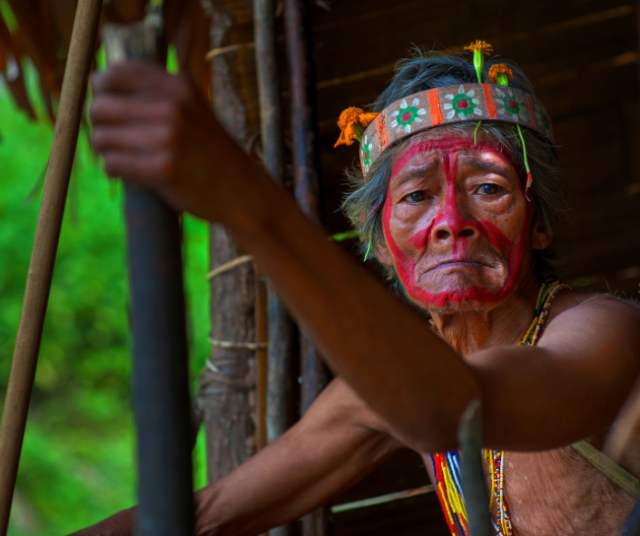Ecuador, with its amazing geographic and cultural diversity, is a country that goes beyond its natural wonders. In the social fabric of this South American nation, various languages are intertwined that reflect the ethnic and cultural wealth of its inhabitants. The different languages spoken in Ecuador are an intangible heritage of humanity. In this article we will look at 13 of them, offering a fascinating journey through the linguistic diversity that defines this unique nation.
Spanish: The Official and Common Language.
Spanish is the official language of Ecuador and the most spoken in the country. Inherited from Spanish colonization, Ecuadorian Spanish presents regional variations and unique expressions that distinguish it in the Latin American context.
Kichwa: The Language of the Andes.
Kichwa, also known as Quichua, is an indigenous language spoken primarily in the Andes region. This language has several variants and is spoken by indigenous communities that have preserved their language over generations.
Shuar: The Strength of the Amazon.
Shuar is an indigenous Amazonian language spoken by the Shuar people. This community, known for its rich cultural heritage and its deep connection to the Amazon rainforest, maintains its language as a symbol of identity.
Achuar-Shiwiar: Linguistic Treasures in the Amazon.
Achuar-Shiwiar is another Amazonian language spoken by communities in the eastern region of Ecuador. Each of these languages contributes to the cultural and linguistic diversity of the Ecuadorian Amazon.
Waorani: Hidden Treasures in the Tropical Rainforest.
Waorani is a language spoken by the Waorani community in the Amazon region. This language, unique and vital to the preservation of Waorani culture, has been the subject of efforts to document and revitalize its use.
Tsáchila: A Link with Nature.
Tsáchila is spoken by the Tsáchila community, originally from the coastal region of Ecuador. This language is an integral part of Tsáchila identity and reflects their deep connection with nature.
Awa-Cuaiquer: Voices from the Coast and the Sierra.
Awa-Cuaiker is spoken by the Awá people, who reside in the coastal and mountain regions. This language is essential for communication within the Awá community and has been transmitted through generations.
Siona: Between the Rivers and the Jungle.
Siona is an Amazonian language spoken by the Siona community, which resides on the banks of the Napo and Putumayo rivers. Their language reflects the close relationship of this community with the jungle and aquatic resources.
Redwood: Living in Harmony with Nature.
Secoya is spoken by the Secoya people in the Amazon region of Ecuador. This language is a vital tool for the transmission of ancestral knowledge and the preservation of the harmonious relationship of the community with nature.
Cofán: Between the Jungles and the Mountains.
Cofán is a language spoken by the Cofán people, who reside in the jungle and mountain areas of Ecuador. This language is essential for the preservation of the culture and identity of the Kofan community.
Zapara: A Linguistic Echo in Danger of Extinction.
Zapara, spoken by the Zapara community in the Amazon region, faces the risk of extinction. Documentation and revitalization efforts are crucial to preserving this linguistic eco.
Colorado: A Language at the Crossroads of Time.
Colorado is an Amazonian language spoken by the Colorado community. Although facing revitalization challenges, efforts continue to preserve this vital component of cultural identity.
Aingae:
Aingae is spoken by the Huaorani community, an indigenous population of the Amazon region. This language reflects the deep relationship of the Huaorani with the jungles and rivers they call home.
Preserving Linguistic Diversity: Challenges and Hopes.
Despite Ecuador's linguistic wealth, many of these languages face threats of extinction due to factors such as globalization, loss of traditional lands, and lack of official recognition. However, various organizations and communities work tirelessly to document, revitalize and preserve these languages, recognizing their importance in preserving cultural diversity and heritage.
The different languages spoken in Ecuador paint a vivid portrait of the cultural and linguistic diversity that defines this country. Each language is a unique expression of the identity and worldview of the communities that speak it, weaving a rich narrative that spans the Andes mountains, the Amazon rainforests, and the Pacific coasts. The preservation of these languages is not only essential for indigenous communities, but also for the global enrichment of understanding of the variety and complexity of human expression.
